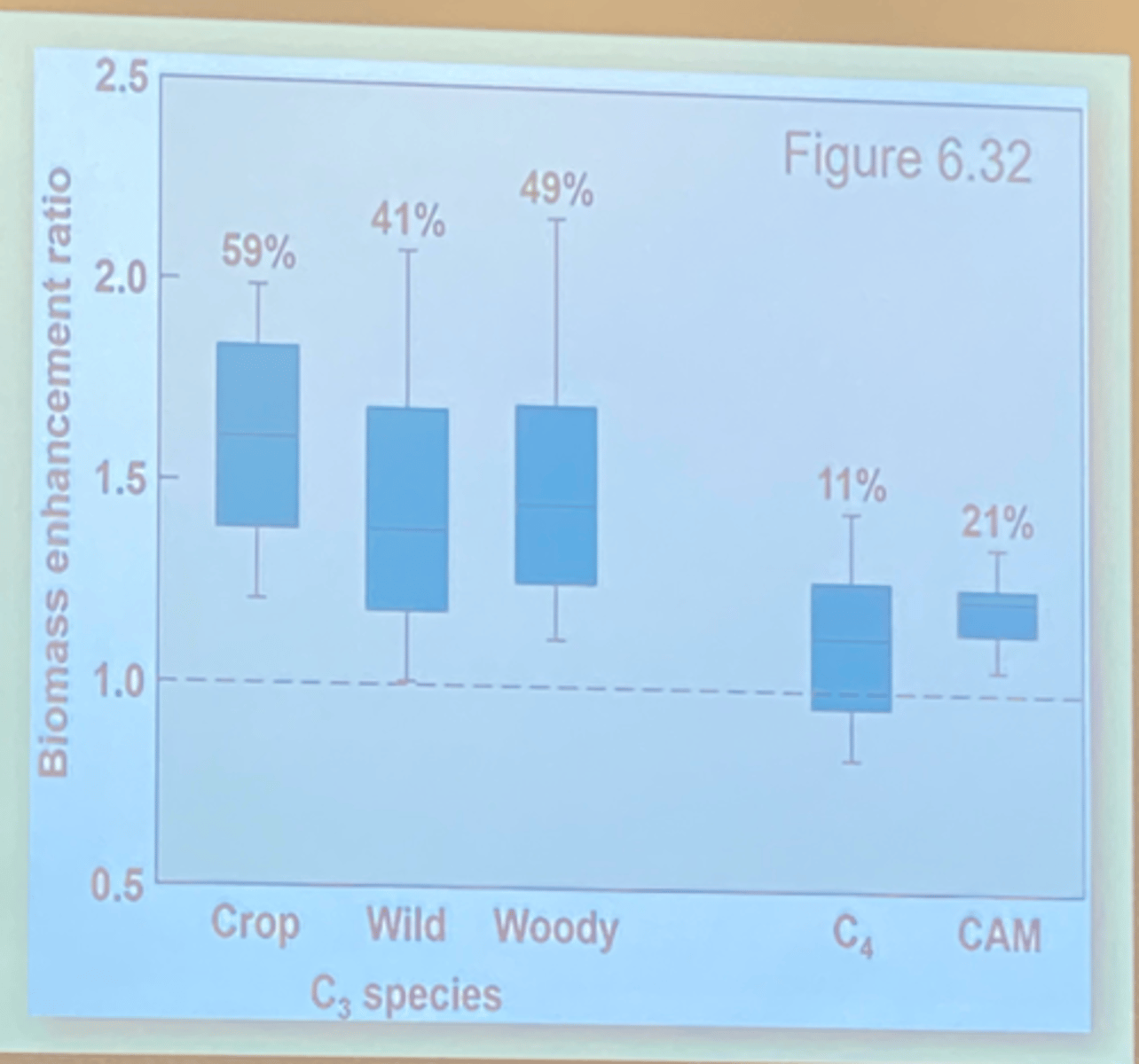Chap 6 Plant Adaptations
1/90
There's no tags or description
Looks like no tags are added yet.
Name | Mastery | Learn | Test | Matching | Spaced |
|---|
No study sessions yet.
91 Terms
All life on Earth is...
carbon based
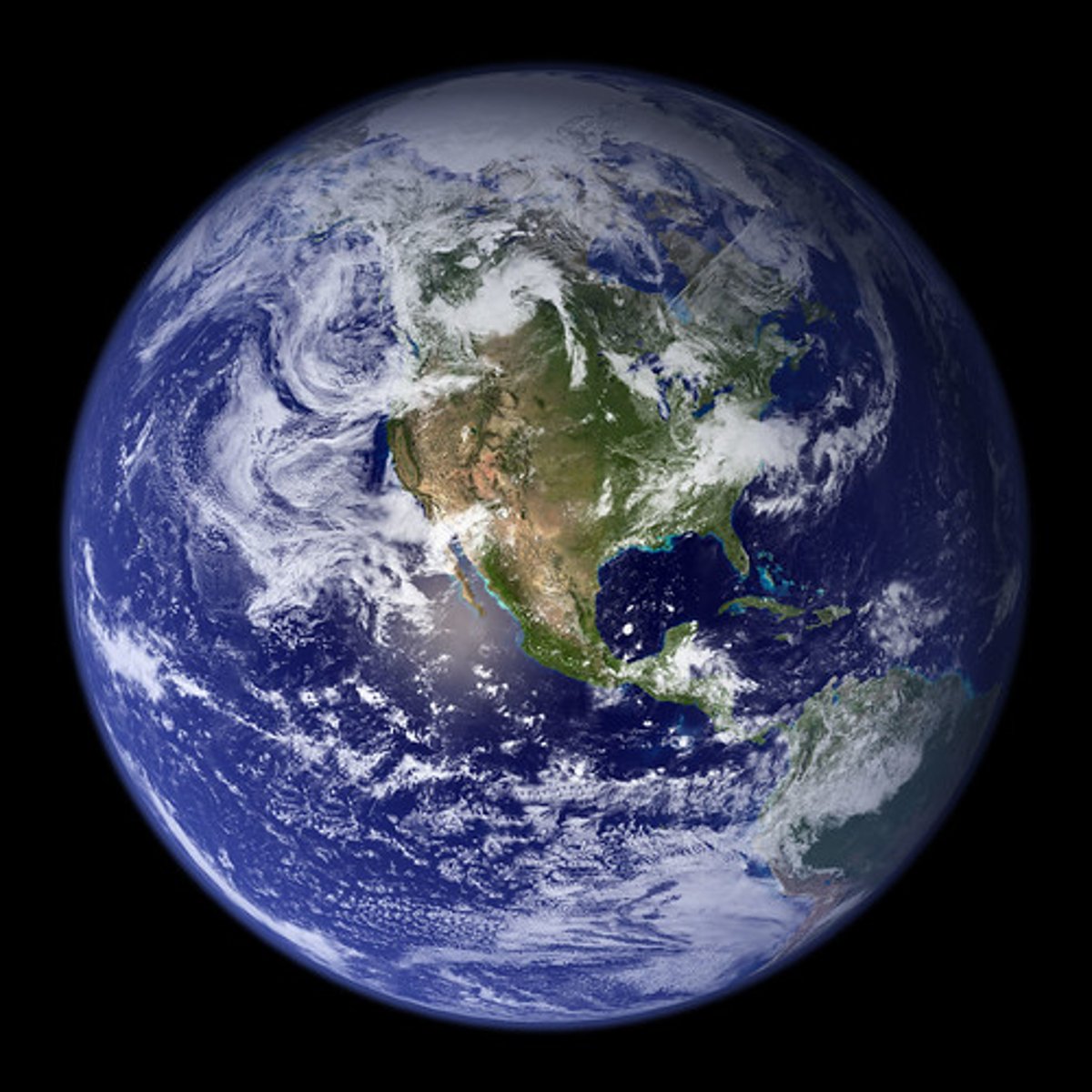
photosyntheis
light energy from the sun dives a series of reactions that result in the fixation if CO2 and the release of O2
photosynthetic pigments
absorb light in the 400-700 nm range (same as visible right spectrum for humans
- PAR range
photosynthetic light energy
is converted to the chemical bond (potential energy) in sugar:
- 6CO2 + 12H2O → C6H12O6 + 6O2 + 6H2O
- other carbon based molecules included complex carbs, proteins, fatty acids are made in other parts of the plant
photosynthesis (light dependent)
light-dependent reactions convert light energy into chemical bond energy
chlorophyll
pigment in the chloroplasts that absorbs light energy
energy is transferred....
to electron carriers in photosynthetic electron transport
-------------------
- requires sunlight
- synthesizes ATP
- reduces NADP+ to NADPH
Light independent reactions use...
chemical bond energy in ATP and NADPH to incorporate CO2 into simple sugars
- doesn't require sunlight
- more adaptive variations
Plants and cellular respiration
plants use this to convert the energy in sugars and other molecules into ATP
C6H12O6 + 6O2 → 6CO2 + 6H2O + ATP
- both use CO2 during photosynthesis and producing it during respiration
Net photsynthesis
Photosynthesis - Respiration
- measured in moles CO2 per leaf are (or mass) per unit time
- µmmol/m2/s
how can we estimate respiration in a plant?
1) measure CO2 production rate with lights off
2) measure CO2 production from roots
Diffusion of CO2 is controlled by
the diffusion gradient or difference in CO2 concentration in the air next to the leaf and the leaf interior (ppm)
Stomatal conduction
flow rate of Co2 through the stomata µmmol/m2/s
Stomata conduction is determined by
- stomatal density
- aperture
stomatal density
# per unit leaf surface area
aperture
size of stomatal openings
why do the stomata close?
- limits water loss
- limits transpiration
- dry conditions or low energy demands
Transpiration
when the somata are open, water vapor in the leaf diffuses out (defusing down its concentration gradient)
transpiration rate depends on...
the vapor pressure gradient (VPD) and stomatal conduction of H2O vapor
- the ralative humidity inside a leaf is usually > than 99%
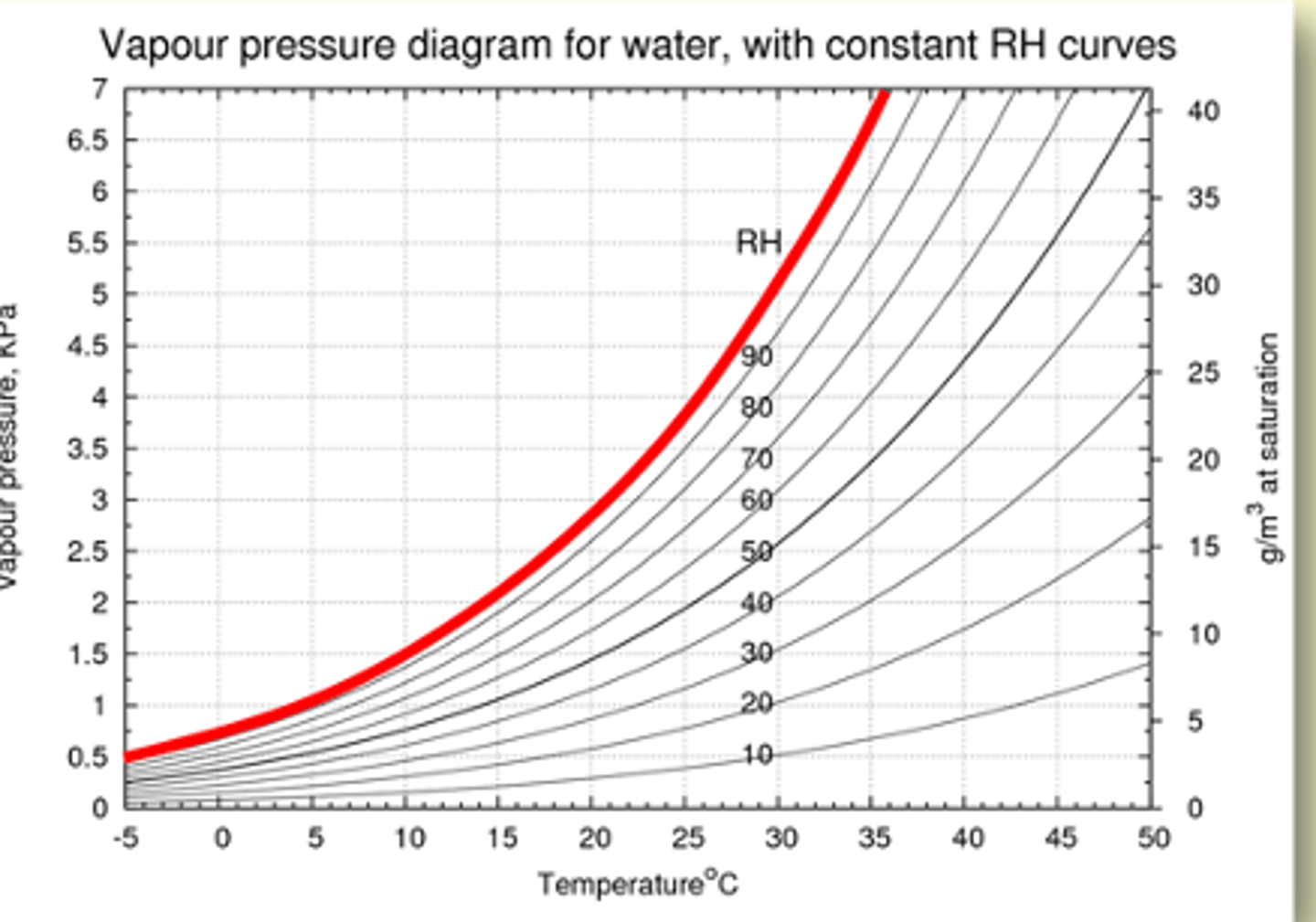
turgor pressure
force exerted outward on a cell wall by the liquid water inside the cell
- plants function best when their cells are fully hydrated (at maximum turgor)
what happens to the plant when the water content of its cells declines?
it dies
how do plants replace water lost through transpiration?
it draws up more water from the roots
water potential (ψ)
difference in Gibbs energy per mole between the water in the continuum and pure water
- expressed in terms of pressure (energy per volum using pascals
- Pa= 1 Newton/m^2
- ψ= zero for pure water at ATM
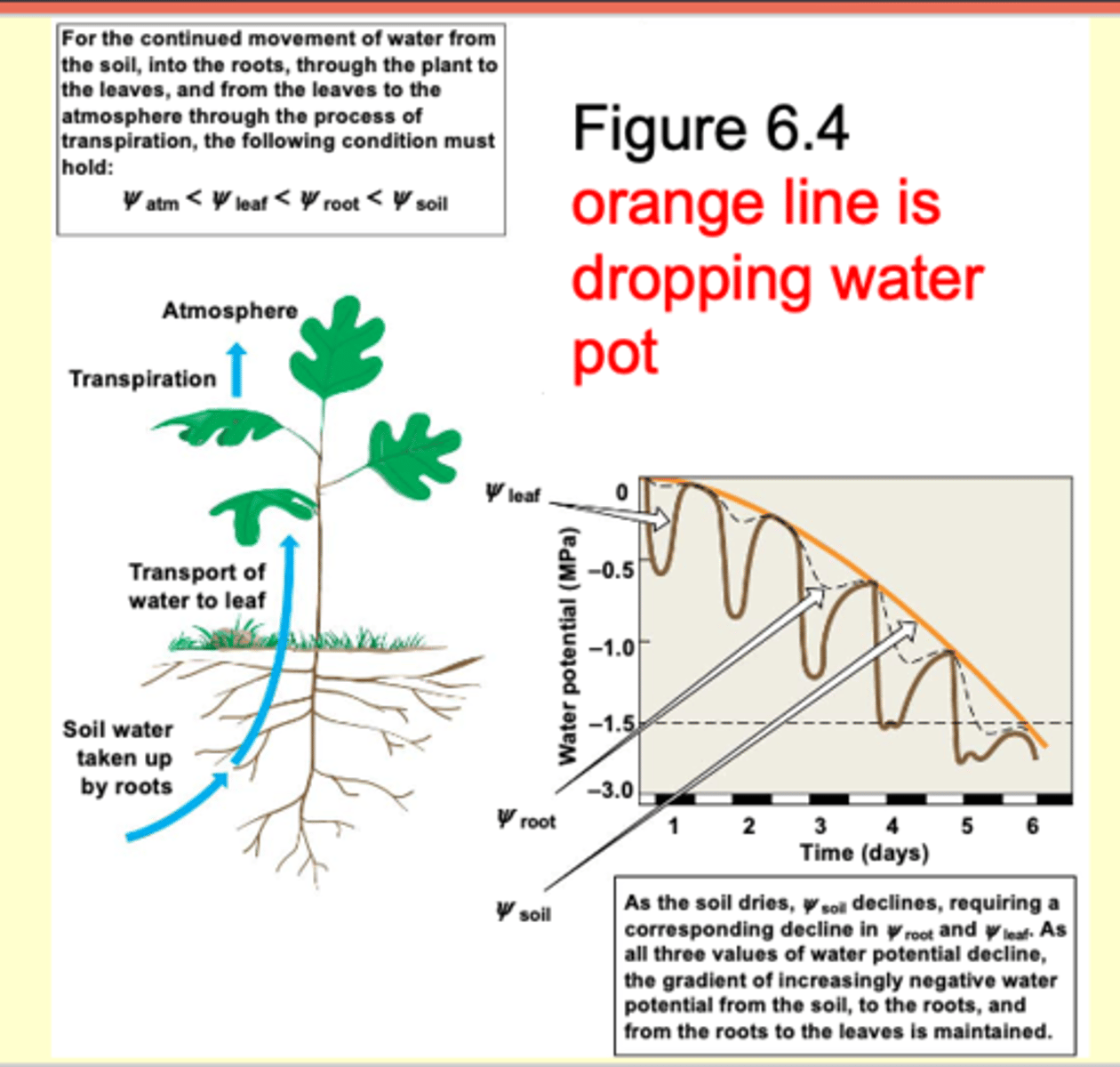
at field capacity
-ψ soil is at or close to negative
- water is freely avialable
as water is taken from the soil
- ψ soil becomes more negative
- water holds more tightly to the soil
clay soils
have a higher surface area meaning they have more negative ψ soil than sandy soils
What two points are made in this graph?
- when leaves get dry, stomata close to conserve water (but this stops photosynthesis because CO2 can be exchanged)
- different species have different stomatal closing threshold
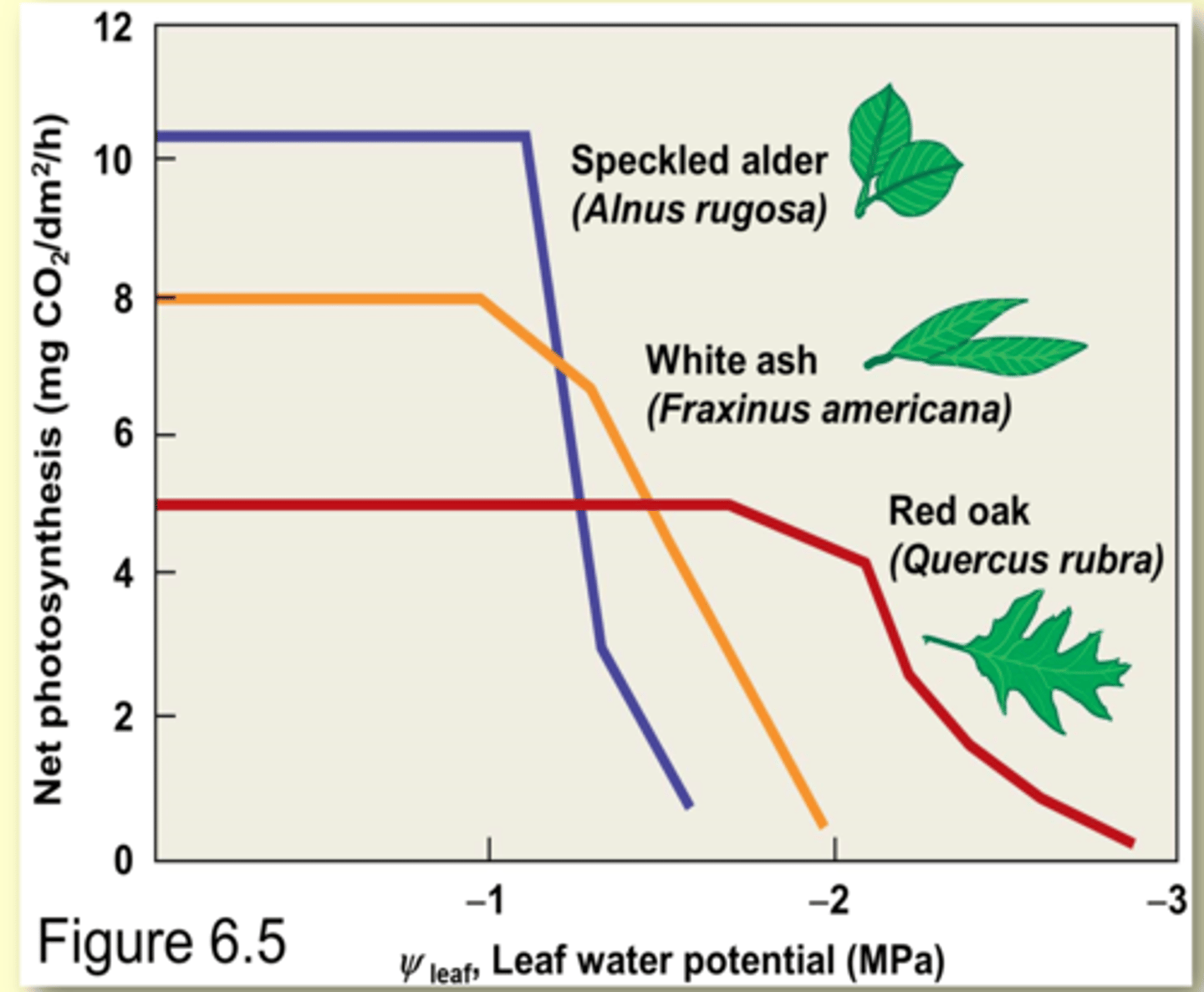
Thermal performance curve is described by three values
Tmin = minimum temp (net photosynthesis near 0)
---------------------
Tmax = maximum temp (net photosynthesis near 0)
---------------------
Topt = range of temp over which net carbon uptake is highest
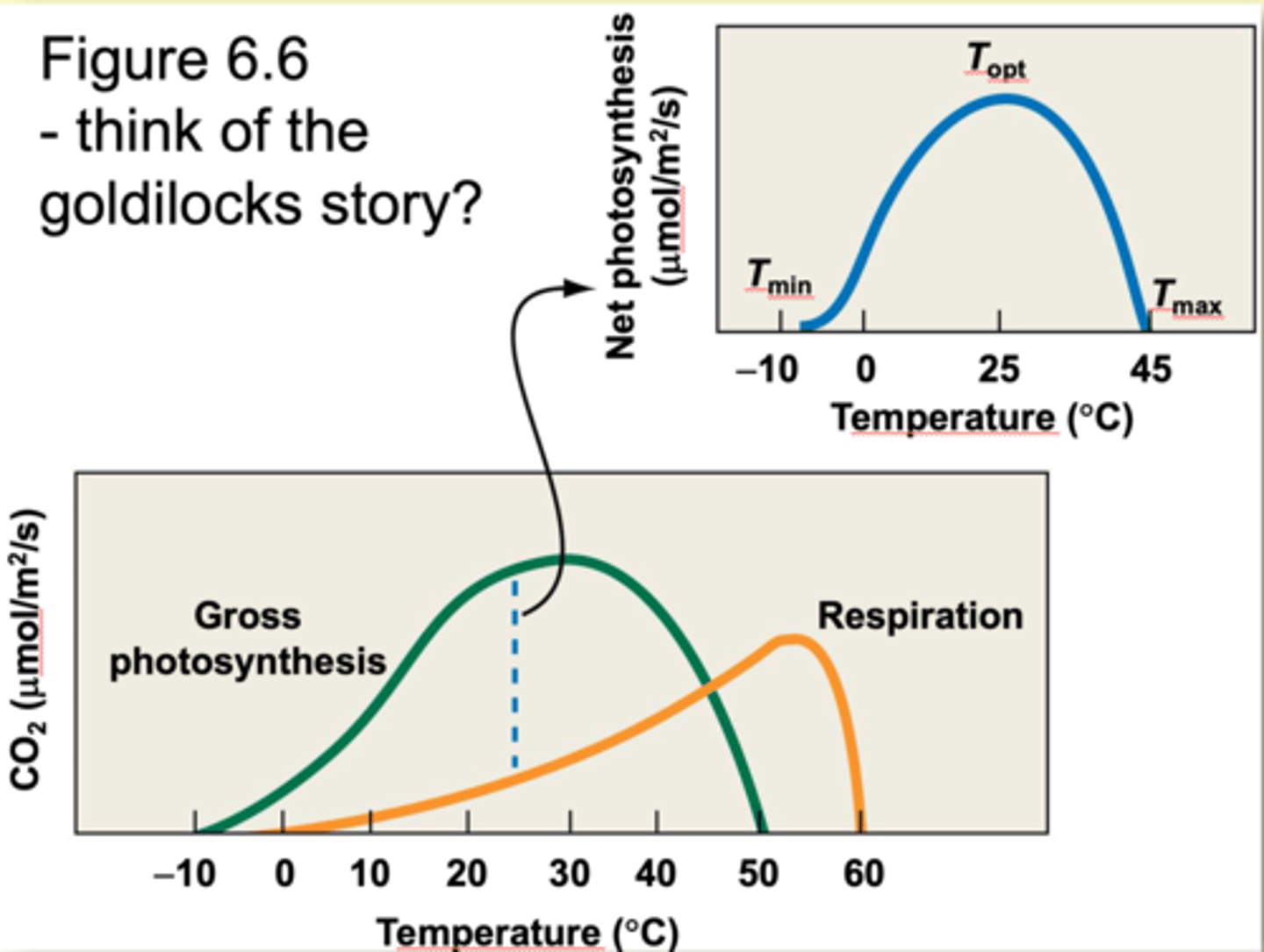
Leaf temperature determines
rate of these two process not the air temp
plants (leaf temperature)
- absorb both shortwave (solar) and longwave (thermal) radiation
- reflect some solar radiation and emit some longwave back to the atmosphere
How much incoming solar radiation is used for metabolism and stored in chemical bonds by a lead?
<10%
-------------------
WHY?
- Some reflected
- remainder raises the temperature of the leaves and surrounding air
terrestrial plants largely lose heat by.....
evaporation and convection
evaporation
part of transpiration
- it requires a large amount of energy to change water from a liquid to a gas
- water transpires from the leaves and thermal energy is lost
higher rate of transpiration
> the evaporative cooling
Convenction
transfer of heat energy through the circulation of fluids (air/water)
if the surface of the leaf is warmer
Thermal energy:
- adjacent molecules of air or water through conduction
- moves from the air next to the leaf
- surrounding air through convection
boundary layer
layer of still air or water next to the surface of each leaf
- reduces the transfer of heat water and CO2 between the leaf and environment
- if no convection, the boundary layer increases in thickness
size of an object can influence the boundary layer
bigger objects = bigger boundary layer (vise versa)
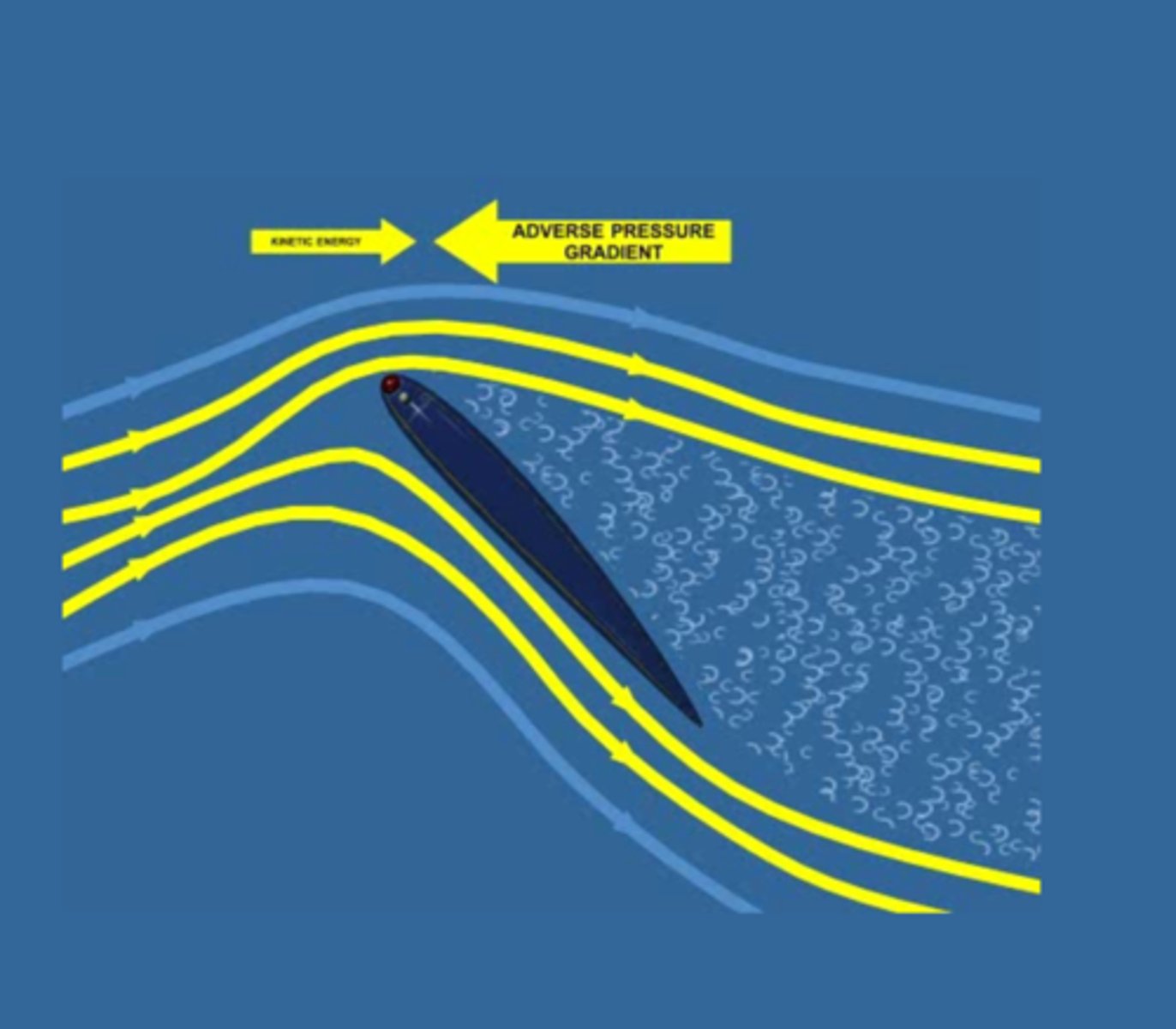
Leafs losing heat through convection due to their size
smaller the leaf = quicker the heat loss (vise versa)
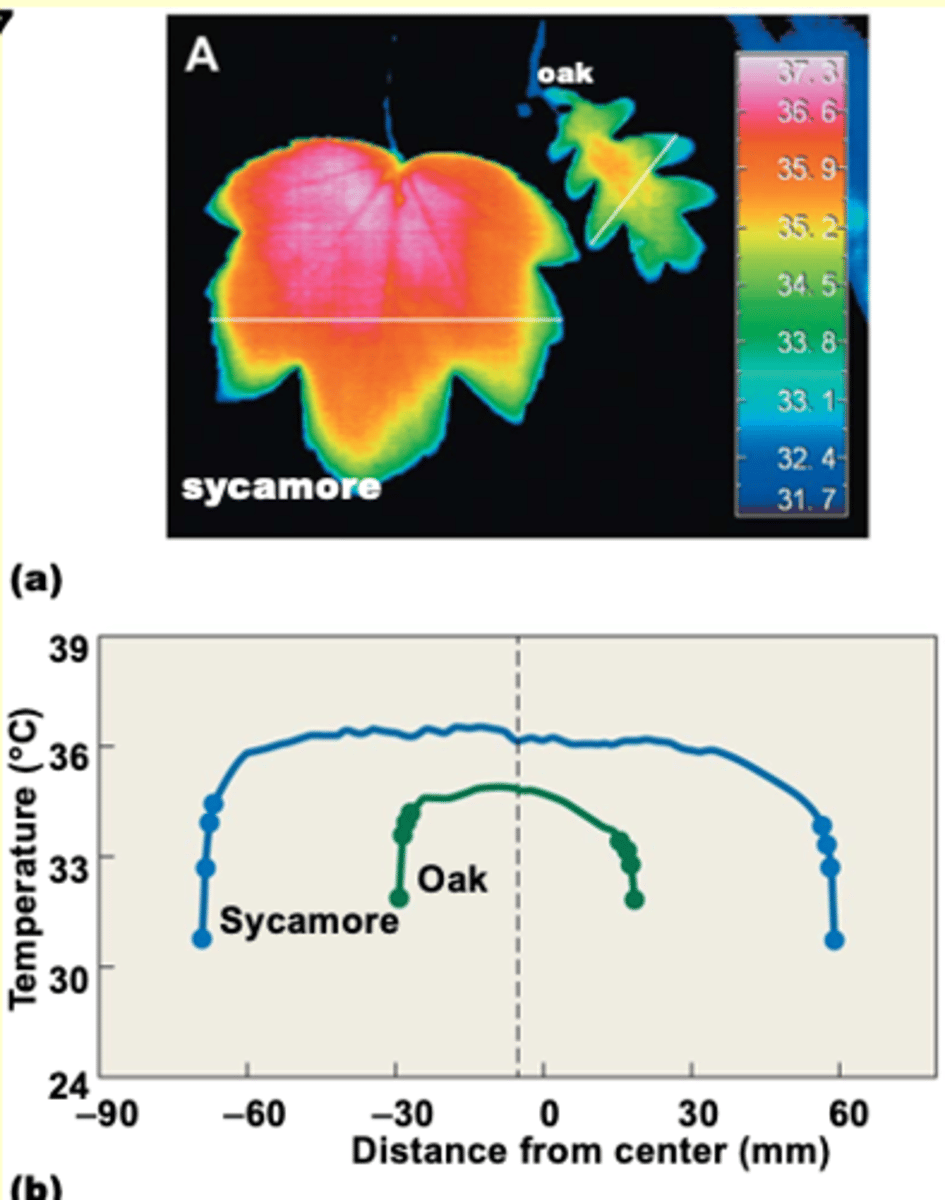
Physical environment can affect....
- areas of high water quality
- areas of lower water quality
Areas of lower water availability
- transpiration is limited to reduce water loss
- plants tend to have smaller leaves
(=> boundary layer => incr. convective heat loss)
----------------
How is heat lost by these plants
A) conduction
B) convection
C) Evaporation
D) radiation
E) None
Evaporation (most through transpiration)
How is most heat lost in areas of lower water availability
through convection
Solar radiation influences
-the amount of PAR
-the temperature of the leaf and surrounding air
-the temperature of the surrounding air affects the relative humidity
-relative humidity affects the rates of transpiration and evaporation of water in the soil
A sunny, dry environment has
-greater PAR
-higher air temperatures
-higher leaf temperatures
-lower humidity
-higher rate of transpiration
-higher rate of evaporation
--------------------
Plants adapted to this enviroment might have smaller leaves, more leaves, more roots, deeper root
Adaptive trade-off
adaptations for one environment may not be as effective in a different environment
- caused by multiple environmental conditions
Plants distribution of carbon is acquired through
Photosynthesis
--------------------
EX: allocating more carbon to producing leaves and stem
- increase access to light and CO2
- Reduce the carbon available to produce roots
- decrease access to water and soil nutrients
Demand for water is related to temperature
as air temp rises
- saturation vapor pressure rises
- rate of transpiration rises
-----------------------
- Water availability and water requirements vary with time
Opening/closing stomata depends on
current conditions
stomata may be closed or partially closed...
- when the atmosphere is dry
- when soil is dry
- during the hottest part of the day
As water stress continues
stomata may be open only during cooler, more humid conditions such as early morning
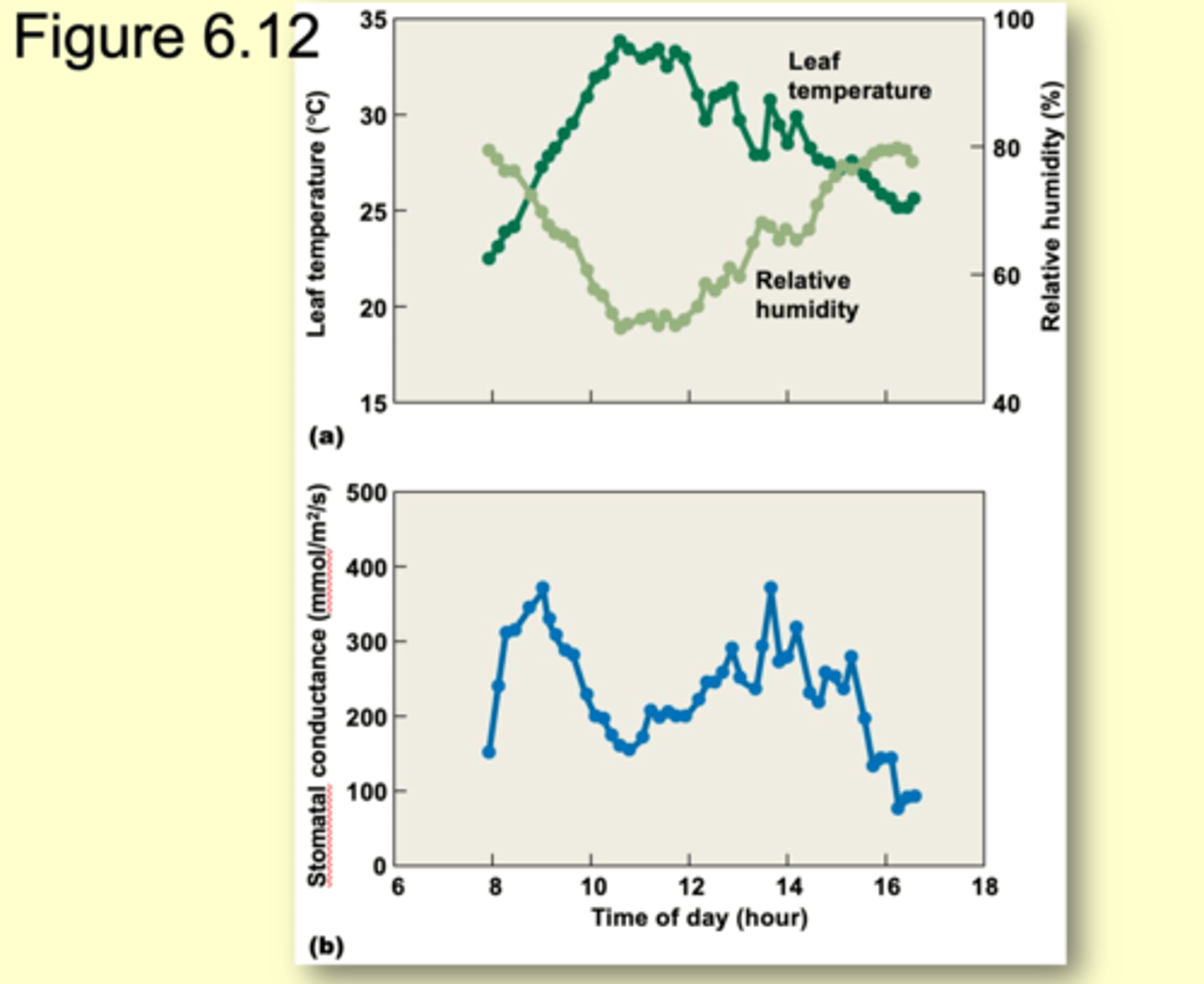
Closing the stomata
-reduces water loss through transpiration
-reduces CO2 diffusion into the leaf
-reduces evaporative cooling
--------------
Reduces the ability to photosynthesize
photosyntheis declines
leaf temperature can rise (get warm)
Some plants respond to moisture stress by
curling leaves or wilting
why is curling or wilting advantageous?
- reduce water loss
- reduce heat gain because the surface area of the leaf is reduced
If a plant encounters low soil water availability during development, carbon allocation is
- increased for the production of roots
- decreased for the production of leaves (Shoots)
- increases the uptake of water per unit leaf area
- reduces total amount of water lost by transpiration (in responce to dry conditions
mesophyll cells
location of light energy capture and conversion, transformation of CO2 into sugars
- products of photosyntheis move into the vascular bundles to be transported around the plant
Carboxylation (C3 pathway)
1) RuBP (5 C mol.) combines with CO2 and fixes it into a solid form
2) reaction produces 2 molecules of 3-PGA (3 C mol)
3) 3-PGA, ATP, and NADPH are used to syntheisze the energy rich G3P
4) some G3P is used to produce sugars and carbs
5) most G3P used to create
new RuBP (with ATP)
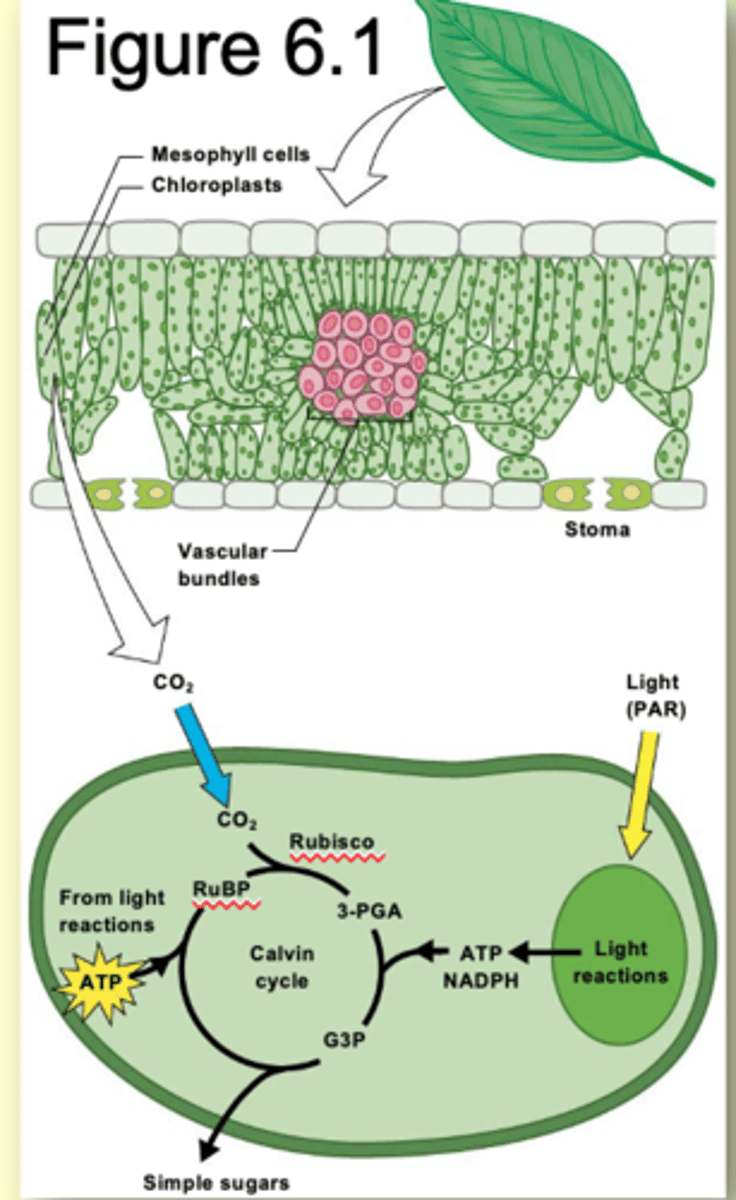
Light availability can limit the light-independent reactions
because it controls ATP and NADPH
C3 pathway drawbacks
Rubisco = oxygenase
- catalyzes the reaction between O2 and RuBP
- results in the photorespiration - the release of CO2
--------------------
Reduces the effiencey of C3 photosynttheis by 25%
photorespiraton
oxygen is being introduced into the Calvin cycle in replace of CO2
- resulting in the decrease in G3P molecules
- Hense reducing the products of Calvin cycle
plants that undergo C4 photosynthesis
have a different leaf anatomy
- contain 2 types of photosynthetic cells
- dosent react with oxygen (unlike C3)
----------------
PHOTOSYNTHETIC CELLS (C4)
- mesophyll cells
- bundle sheath cell
bundle sheath cells
surround the vascular tissue
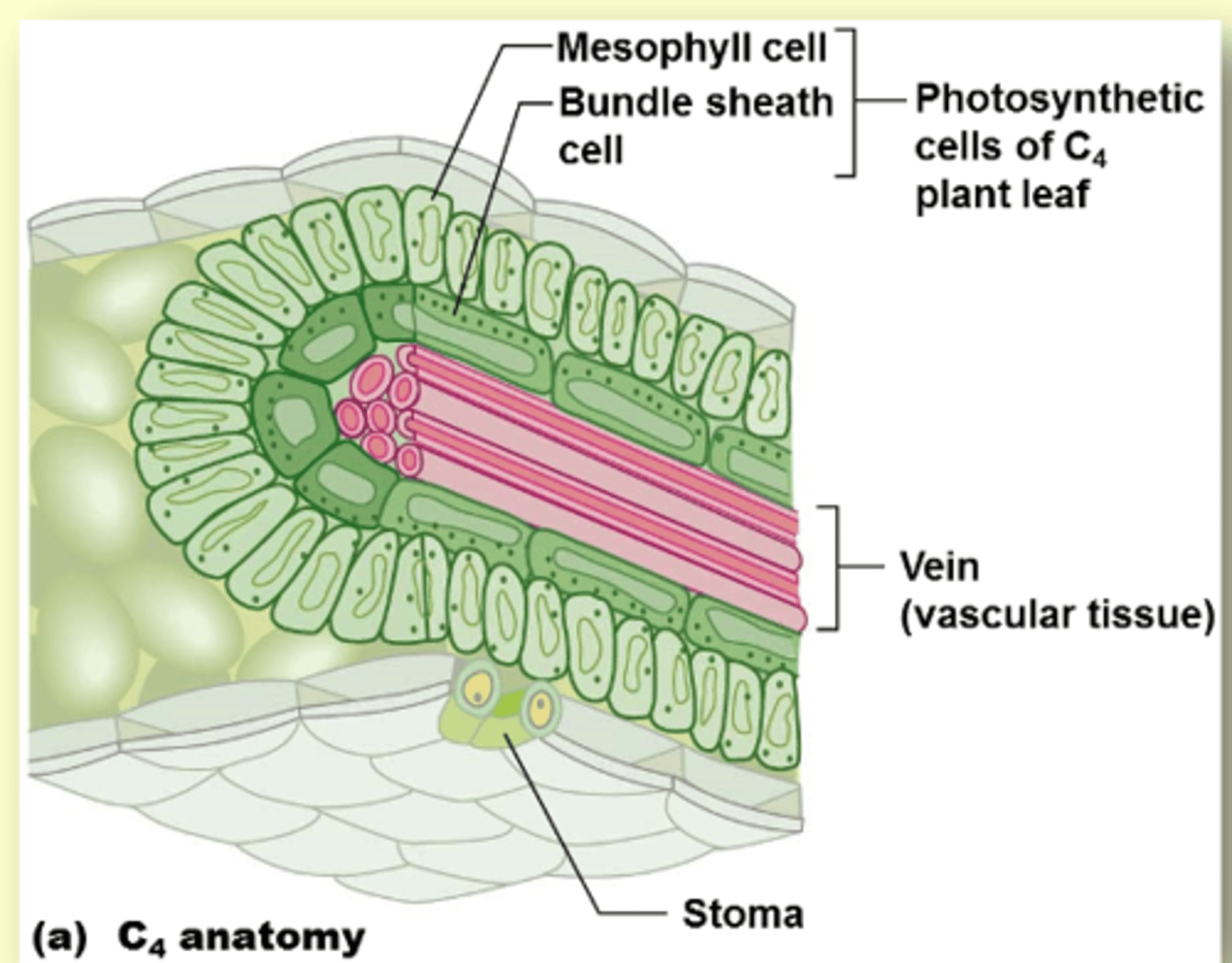
C4 pathway
1) mesophyll cells, CO2 reacts with PEP (3 C mol) to produce
OAA (4 C mol.)
2) OAA is transformed into a 4-C acid
3)Organic acids are transported to the bundle sheath cells
4) Enzymes break them down to form CO2
5) This CO2 then enters the Calvin Cycle
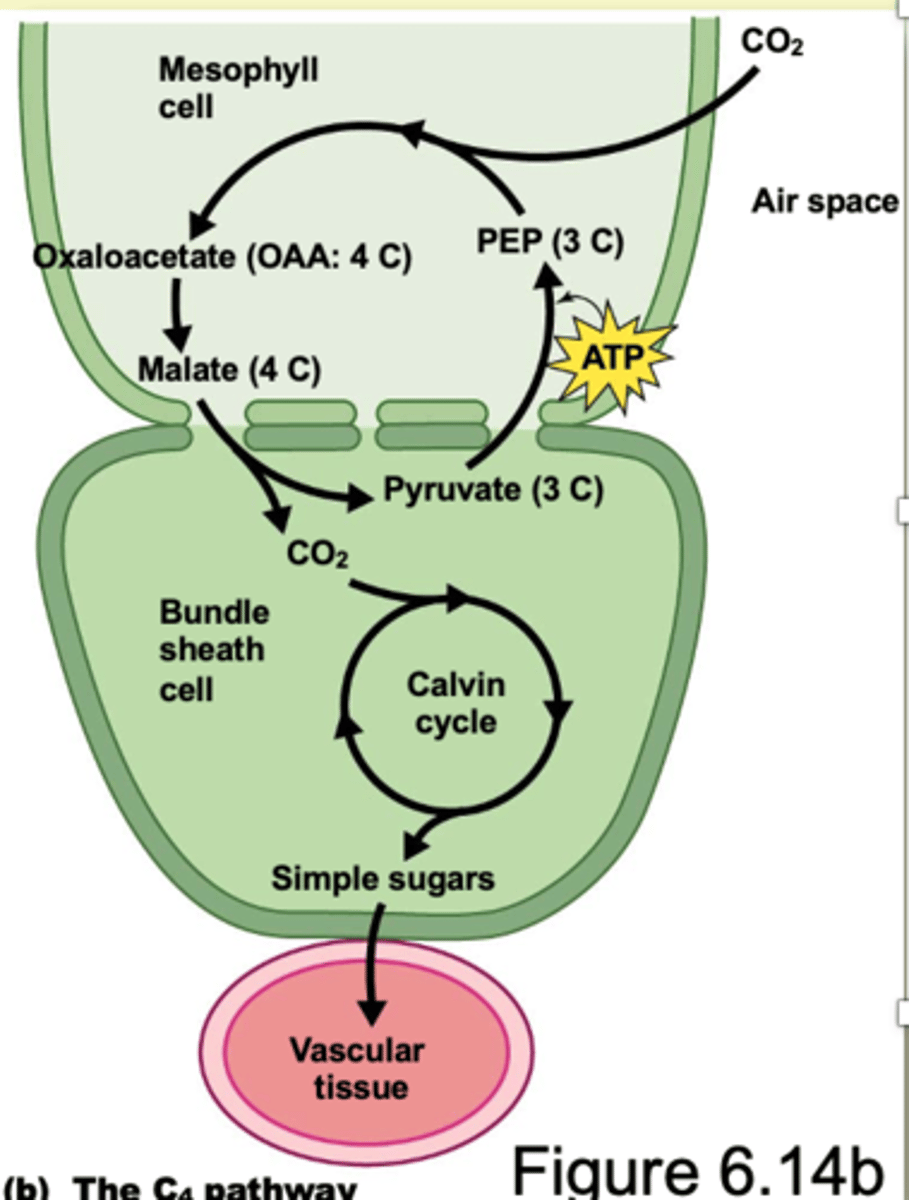
PEP
phosphoenolpyruvate
advantages of C4 photosynthesis
- PEP does not react with oxygen
photorespiration does not occur
- conversion of organic acids into CO2 within the bundle sheath cells concentrates CO2
- reaches much higher concentrations than in C3
- increases efficiency of CO2 and RuBP reaction
Spatially
seperates the steps in two different parts of the leaf
How are O2 and rubisco separated?
O2 produced in light reactions in mesophyll cells and rubisco perform carboxylation in bundle sheath cells
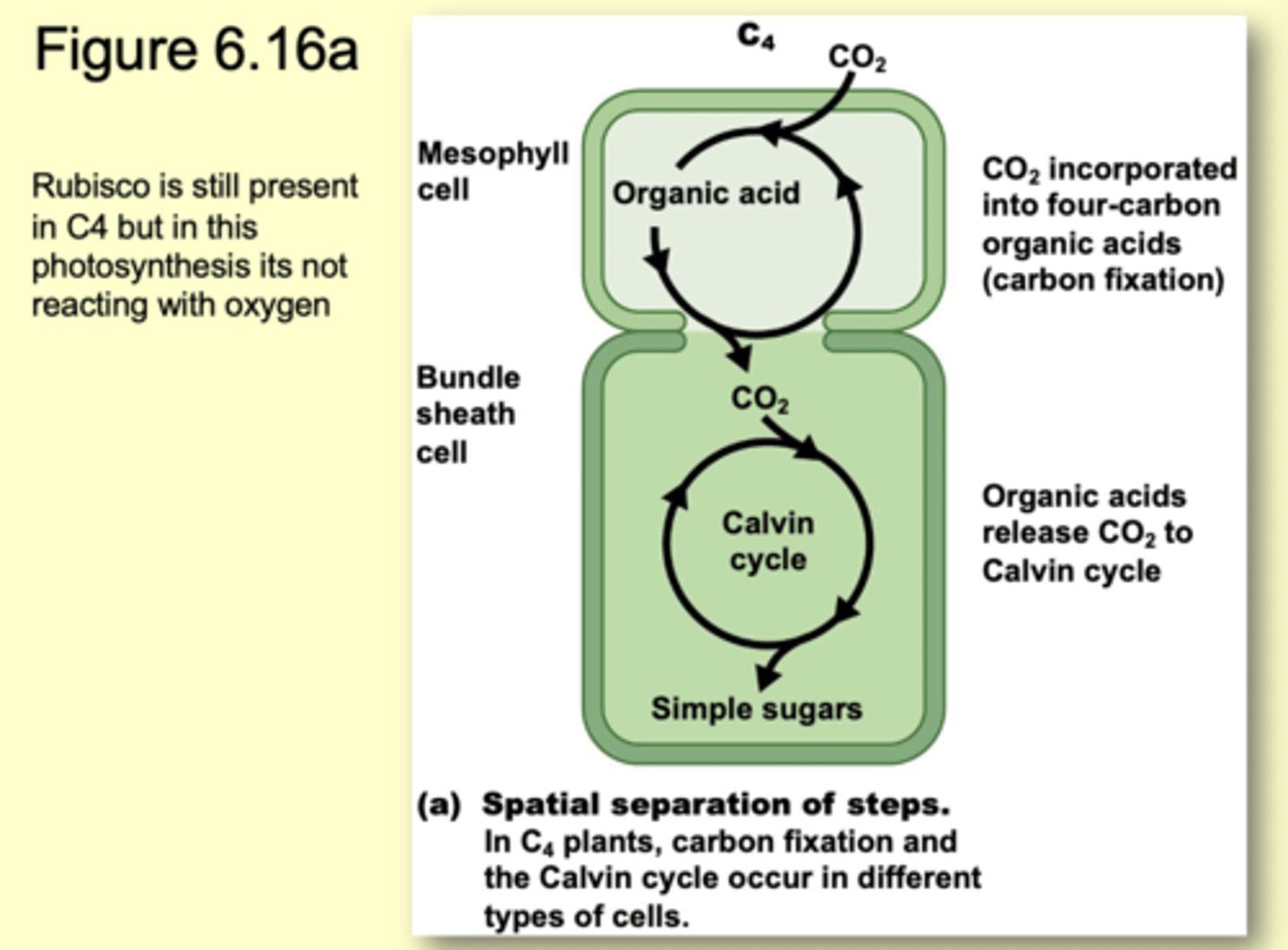
C4 plants have a higher..
- max rate of Photosynthesis (than C3 plants)
- > water use efffciency is an advantage in hot dry climates
- increased energy to produce PEP, bundle sheath cells , and enzymes are the cost
Most C4 plants are
- grasses in tropical or subtropical environments
- shrubs in arid or salty environments
Hot deserts have severe invironments
++ solar radiation
-- water availability
Plants in hot deserts (succulents)
have different type of photosynthesis
- CAM pathway
CAM pathway (crassulacean acid metabolism)
similar to C4 but steps are separated temporally instead of spatially
CAM plants open their stomata at night.
- take up CO2
- Convert to malic acid using PEP carboxylase
- large amounts of malic acid accumulate in mesophyll cells
close stomata during the day
-malic acid converted to CO2
-C3 pathway used to fix CO2 and produce sugars
how is this adaptive for plants living in a hot dry environment
- CAM plants dramatically reduce water loss by opening stomata only at night
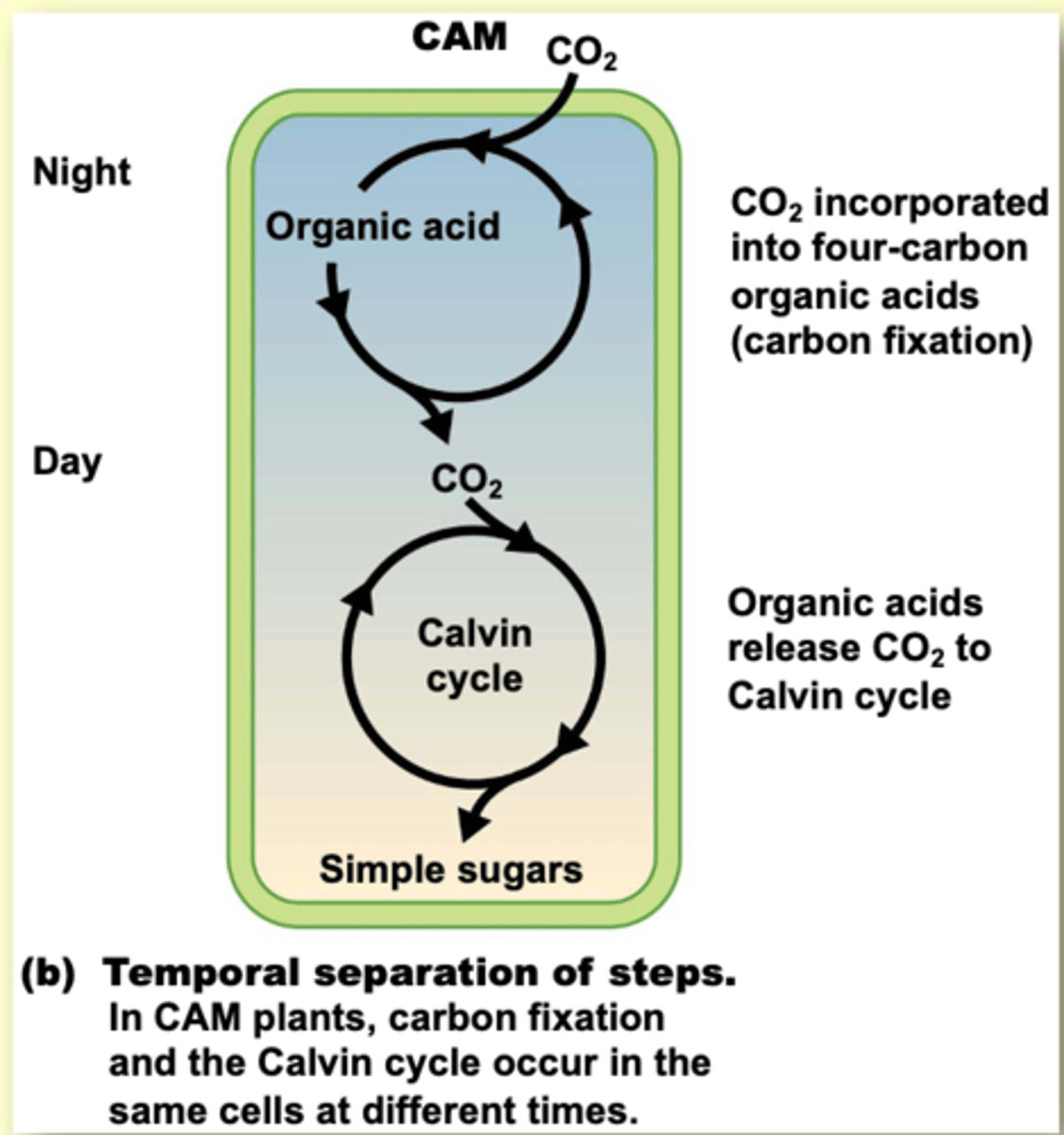
Plants in dry enviroments
- have lower stomatal conductance
- few and smaller stomata
- increased water use efficency
- decreased rate of photosynthesis
greater allocation of carbon to produce roots instead of shoots and leaves
increases ares for extracting water
(volume and depth)
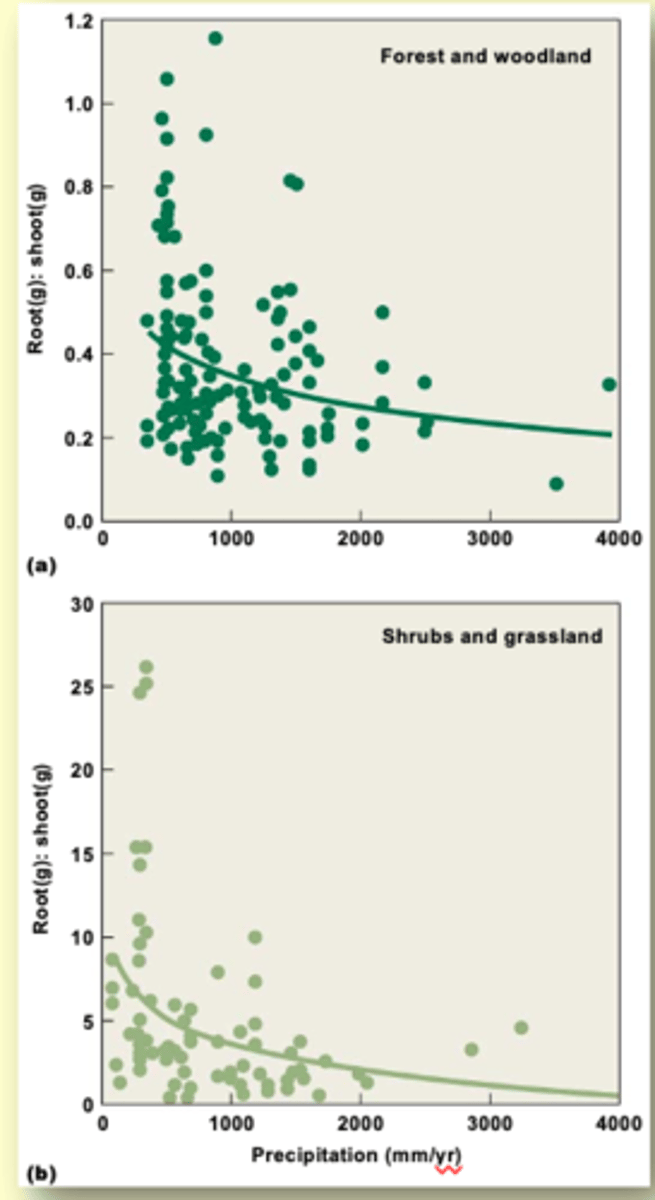
structural features
- can reduce the amount of energy striking the leaf
- increase loss of heat through convection
- reduce the loss of water through transpiration
leaves of plants in dry environments are
- smaller and thicker
- covered with hairs that scatter solar radiation
- have leaves coated with waxes and resins that reflect light and reduce absorption
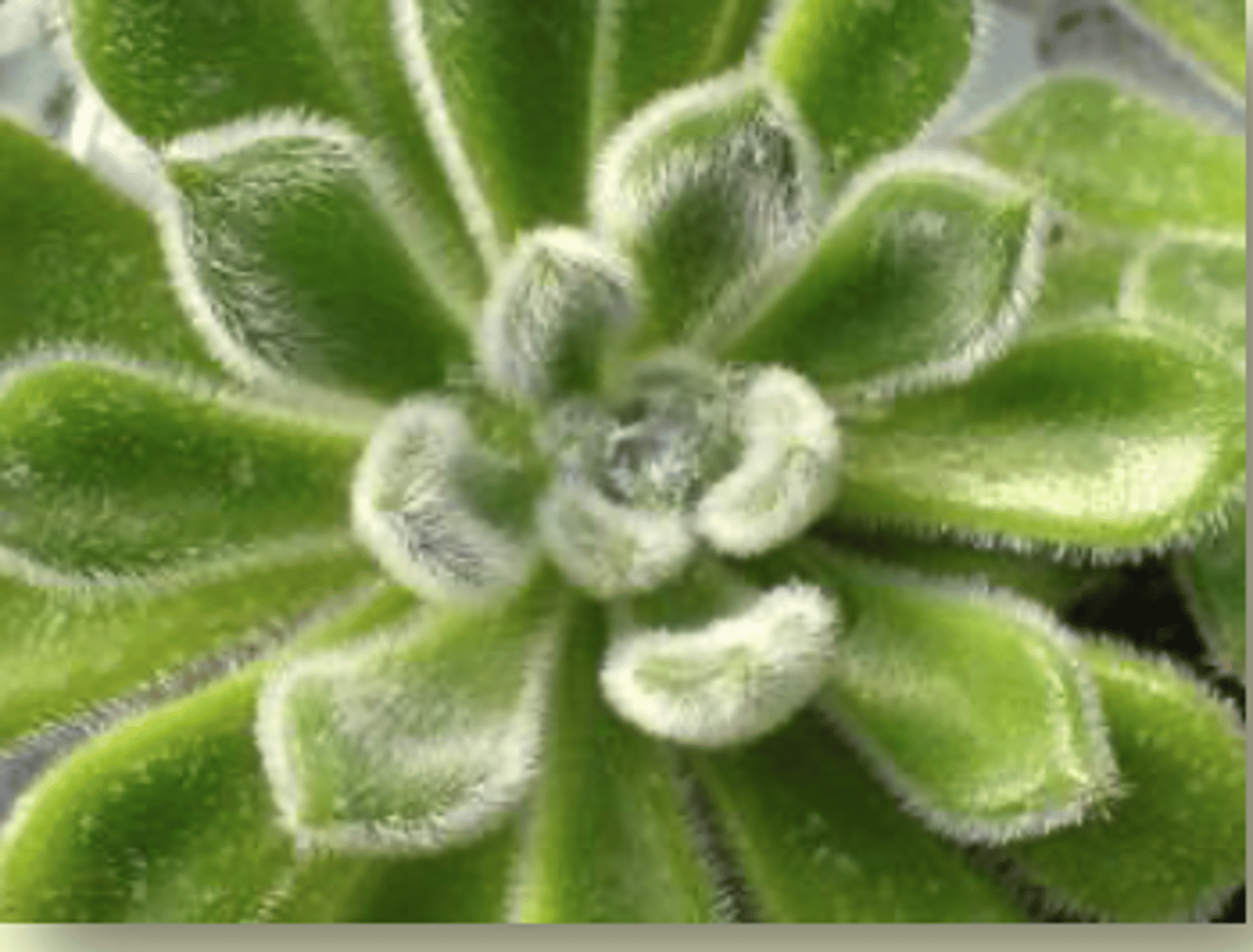
Plants exhibit variation in thermal performance of photosynthesis due to
- genetics
- photosynthesis type
- acclimation
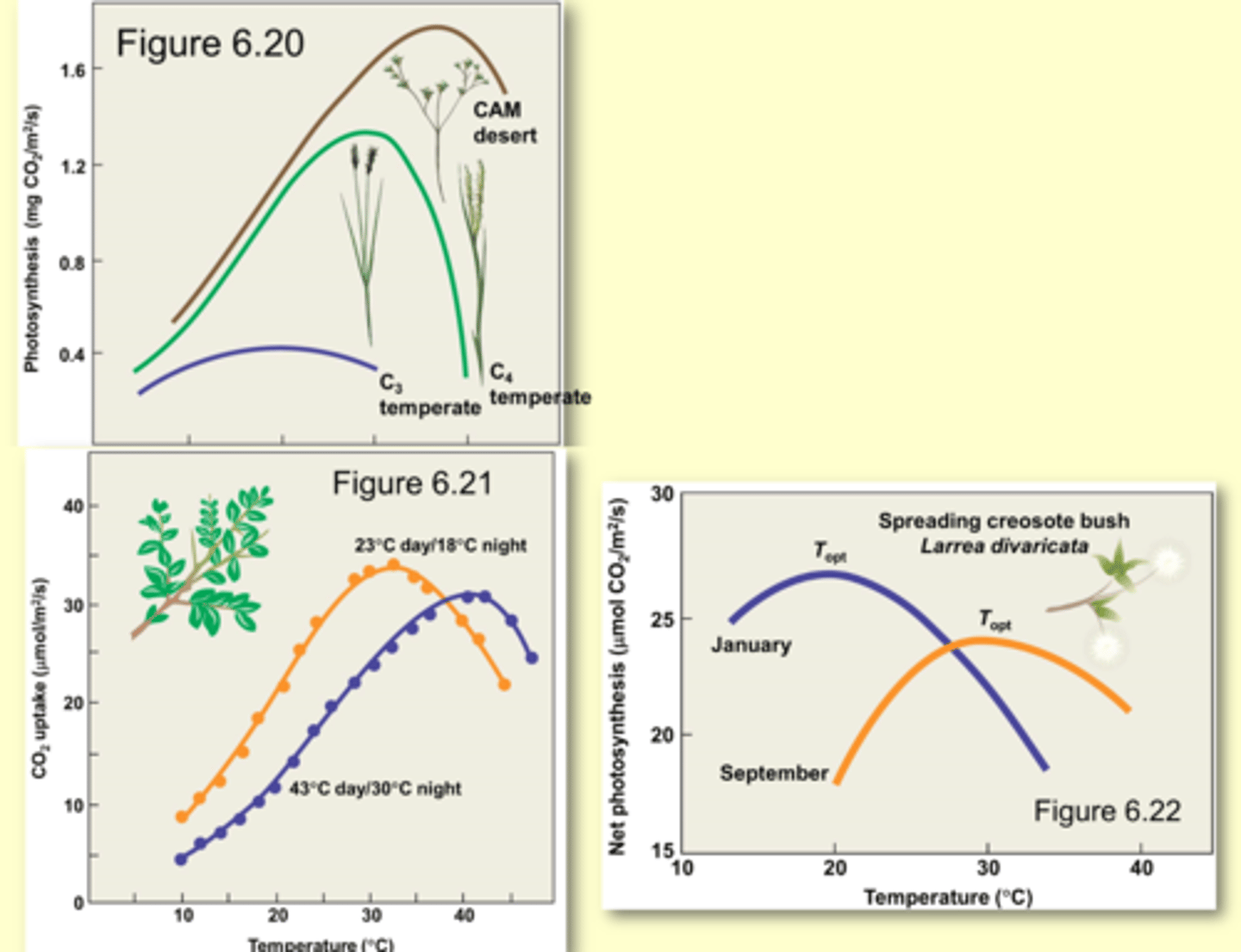
Periods of extreme hot or cold
can damage plant cells and tissues
frost hardening (cold tolerant plants)
genetic ability to tolerate extreme cold
- variable within and among species
-----------------
FEATURES
- can produce compounds that allow leaves to survive freezing temperatures
- has needle leaf evergreens (pine and spruce)
- some are winter deciduous
winter deciduous
shed their leaves before the beginning of the cold season
Macronutrients
nutrients needed in large amounts
C, H, O (macronutrients)
derived from CO2 and H2O
N, P, K, Ca, Mg, S (macronutrients)
- terrestrial plants acquire from the soil;
- aquatic autotrophs acquire from the substrate or water
Micronutrients (trace elements)
nutrients required in very small quantities for growth and reproduction
What adaptations are exhibited by plants in low nutrient environemnts?
- Higher ratio of roots to shoots
- lower growth rate
- increased leaf longevity
- carnivory
FACE experiments
determine plants responses to elevate levels of atmospheric CO2
Why type of photosynthesis is likely to benefit the most from elevated CO2
A) C3
B) C4
C) CAM
C3 because they're naturally less efficient at assimulating carbon
